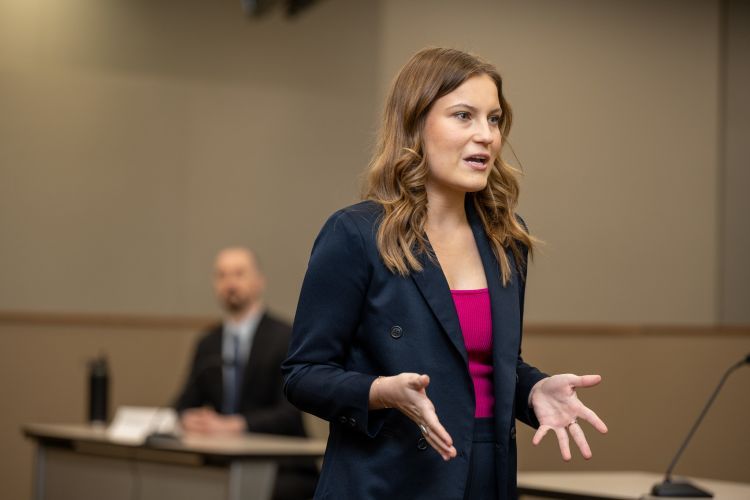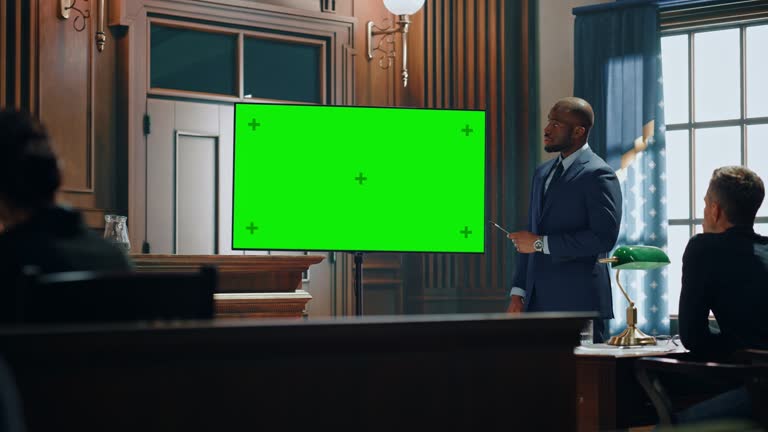Browsing the Complexities of Test Presentations: Tips for Seamless Delivery and Engaging Disagreements
In the realm of legal procedures, the art of trial discussion stands as an essential component of success. The complexities inherent in trial presentations require a delicate balance of finesse, strategy, and skill.

Understanding Trial Goals
To successfully browse a test, it is essential to have a clear understanding of the goals that require to be attained. Prior to tipping right into the courtroom, legal teams should define their objectives and wanted results. These goals act as leading concepts throughout the test, forming approaches and affecting decision-making procedures.
Recognizing test purposes entails a comprehensive analysis of the case, legal criteria, and the customer's ideal passions. Trial Presentations. It calls for a meticulous examination of the facts, identifying key issues, and anticipating possible obstacles. By establishing certain and quantifiable goals, lawyers can customize their presentations and arguments to straighten with the wanted outcomes
Furthermore, a clear grasp of trial purposes allows legal teams to focus on evidence, witnesses, and legal debates efficiently. It permits the development of a systematic story that resonates with the court and court, strengthening the overall instance presentation.

Organizing Evidence Effectively
Having a clear understanding of trial purposes lays the structure for organizing evidence properly in lawful procedures - Trial Presentations. By aligning the presentation of proof with the preferred outcomes of the test, lawful teams can reinforce their debates and improve their persuasiveness. One important aspect of arranging evidence is categorization. Organizing evidence based upon styles or significance to specific lawful elements can help enhance the presentation and make complex details much more absorbable for the court or jury.
An additional key component in arranging proof efficiently is developing a rational circulation. Presenting proof in a coherent and consecutive fashion can help construct a compelling story that sustains the legal debates being made. Additionally, utilizing aesthetic aids such as charts, timelines, or charts can further improve the company of evidence and assist in making clear complex connections or series of events.
Additionally, making certain that all evidence presented is relevant and acceptable to the situation is essential. Inadmissible or pointless proof can diminish the toughness of the debate and potentially harm the trustworthiness of the here and now event. Therefore, a precise evaluation and choice procedure need to be taken on to consist of just one of the most impactful and legally sound proof in the trial presentation.
Crafting Influential Stories
Crafting compelling stories plays a critical function in presenting influential disagreements throughout legal proceedings. When building a narrative for a test presentation, it is necessary to establish a clear story that highlights essential factors and links them in a coherent fashion. By weaving together proof, testimony, and lawful arguments right into a cohesive and convincing story, legal experts can effectively advocate for their customers and boost the likelihood of a positive outcome in the court.
Understanding Visual Help
Reliable use visual help is key to improving the influence and clarity of trial discussions. Visual help, when made use of strategically, have the power to simplify intricate information, reinforce bottom lines, and leave a lasting perception on the court and court. To understand visual aids in trial discussions, it is essential to make sure that they are clear, succinct, and pertinent to the arguments being made.
When incorporating visual aids, such as graphes, timelines, photographs, or graphs, right into a test discussion, it is necessary to keep them visually appealing yet professional. The visuals ought to match the verbal disagreements, offering a visual representation of the info being reviewed without frustrating the target market with unneeded information.
Additionally, exercising with the aesthetic aids in advance is necessary to make certain a smooth distribution throughout the trial. Familiarizing oneself with Full Report the content, shifts, and timings of each aesthetic aid can help maintain the circulation of the discussion and stop technical glitches that might emerge.
Supplying Impactful Closing Disagreements
A compelling closing argument works as the end result of a test discussion, encapsulating the core narrative and persuading the court and jury towards a desirable choice. To provide an impactful closing argument, it is crucial to succinctly summarize bottom lines, highlight the strengths of your instance, and deal with any type of weaknesses in a strategic fashion. Begin by detailing the main debates that support your customer's setting, stressing why the proof provided throughout the trial sustains your narrative. It is necessary to produce a sense of cohesion and clearness, directing the discretionary in the direction of the preferred verdict.
Furthermore, integrating psychological charm can better strengthen your closing argument. Ultimately, a well-crafted closing disagreement must leave a long-term impact, engaging the court and court to rule in your customer's support.
Verdict
In conclusion, grasping test discussions entails comprehending objectives, arranging evidence, crafting stories, utilizing visual help, and delivering impactful closing debates. By implementing these click here to find out more strategies effectively, lawyers can offer their instance flawlessly and make engaging disagreements in the court. It is vital to navigate the complexities of trial discussions with accuracy and skill to achieve success in legal process.
By straightening the discussion of evidence with the desired end results of the test, legal teams can reinforce their disagreements and improve their click here for info persuasiveness (Trial Presentations). To master aesthetic help in trial discussions, it is critical to make sure that they are clear, concise, and relevant to the debates being made
A compelling closing argument offers as the conclusion of a trial discussion, encapsulating the core narrative and encouraging the judge and court towards a beneficial choice. Begin by detailing the main debates that support your customer's setting, emphasizing why the proof presented throughout the test supports your story.In final thought, understanding trial discussions includes understanding goals, organizing proof, crafting narratives, using visual aids, and supplying impactful closing disagreements.
Comments on “Navigating Complicated Situations: Exactly How to Establish Efficient Trial Presentations for Ideal Results”